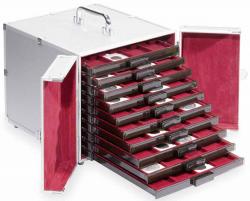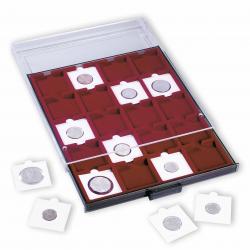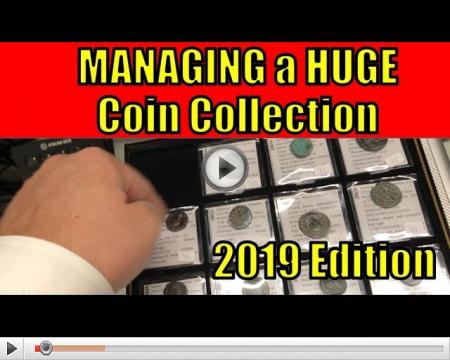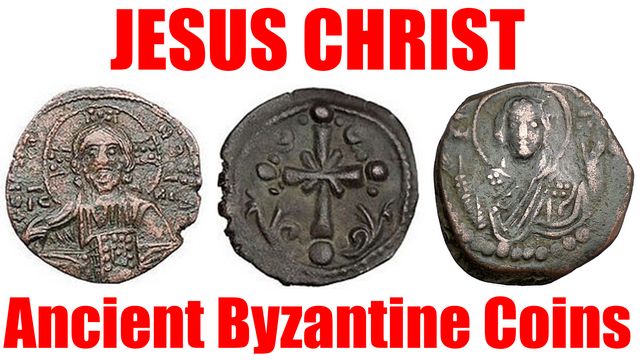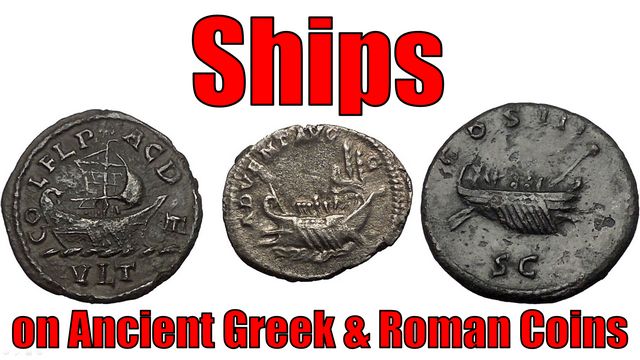Interesting Commemorative Ancient Greek & Roman Coins to Collect
https://www.youtube.com/watch?v=E5ohAudMAP4
This article is to explore just some of the very interesting types of ancient Greek and Roman coins that were made to commemorate a certain event. This article starts with coins of Alexander the Great’s father, Philip II who struck coins with a horseman on the reverse that according to an ancient historian was in commemoration of his Olympic games victory in horse racing. The next coin that we explore is a coin of Augustus commemorating his victory over Brutus. The next coin type we explore are the coins celebrating the founding of Viminacium. And the last coin types explored in this article are of Constantine the Great celebrating the legendary founders of Romulus and Remus and the founding of his new capital of Constantinople.See all my educational coin video on this playlist:
https://www.youtube.com/playlist?list=PL3dOqeLcLHYna6jl4_W5brq7ydWkewBdv
Philip II the father of Alexander the Great Celebrates OLYMPIC GAMES VICTORY on his Ancient Greek Coin Horse Racing
Greek King Philip II of Macedon 359-336 B.C.
Father of Alexander III the Great
Silver Tetrobol 14mm (2.33 grams) Struck circa 323-315 B.C. in the Kingdom of Macedonia
Commemorating his Olympic Games Victory
Reference: Le Rider-Pl.46,26
Head of Apollo right, hair bound with tainia.
Nude athlete on horse prancing right, ΦIΛIΠΠΟΥ above; branch below.
* Numismatic Note: Authentic ancient Greek coin of King Philip II of Macedonia, father of Alexander the Great. Intriguing coin referring to his Olympic victory.
History and Meaning of the Coin
During the times of ancient Greeks, horse racing was one of the events various Greek city-states and kingdoms would have intense competition with each other, as it was of great prestige to participate. Before the time of Philip II, the kingdom of Macedonia was considered barbarian and not Greek. Philip II was the first king of Macedon that was accepted for participation in the event, which was a great honor all in itself. It was an even greater honor that Philip’s horses would go on to win two horse-racing events. In 356 B.C., he won the single horse event and then in 348 B.C. chariot pulled by two horses event. As a way to proudly announce, or what some would say propagandize these honors, Philip II placed a reference to these great victories on his coins struck in all three metals of bronze, silver and gold. The ancient historian, Plutarch, wrote “[Philip of Macedon] … had victories of his chariots at Olympia stamped on his coins.”
AUGUSTUS Victory Over Brutus Cassius Assassins of Julius Caesar Roman Coin
Augustus – Roman Emperor: 27 B.C. – 14 A.D.
Bronze 19mm (4.24 grams) from the city of Philippi in Northern Greece,
Macedonia circa 27 B.C. -10 B.C.
Reference: BMC 23; Sear 32
VIC AVG, Victory standing left.
3 legionary Standards, ‘COHOR PRAEPHIL’.
GORDIAN III Viminacium LEGIONS Ancient Roman Coin LION & BULL
Gordian III – Roman Emperor: 238-244 A.D. –
Bronze 22mm (6.83 grams) of Vimincium 238 A.D.
the 1st year of it’s founding (=AN I) 23 in the province of Moesia Superior
IMP CAES M ANT GORDIANVS AVG, radiate, draped and cuirassed bust right.
P M S COL VIM, City goddess standing, bull (symbol for legion VII) and lion (symbol for legion IIII) at sides, AN.I. in exergue.
Constantine I The Great Ancient Roman Coin Romulus & Remus “Mother” wolf
Constantine I ‘The Great’ – Roman Emperor: 307-337 A.D. –
ROME CITY COMMEMORATIVE
Bronze AE3 17mm (2.10 grams) Heraclea mint: 330-333 A.D.
Reference: RIC 119 (VII, Heraclea)
VRBSROMA – Roma helmeted, draped and cuirassed bust left.
No legend Exe: .SMHЄ. wolf standing left, suckling Romulus and Remus; two stars above.
By circa 330 A.D., Constantine the Great completed his new capital for the Roman empire called Constantinople. For this momentous occasion, he issued two commemorative coin types, one celebrating Rome and the other Constantinople. The type that commemorated Rome had the personification of Rome, Roma with the inscription VRBS ROMA and the founders of Rome, Romulus and Remus on the reverse suckling the she-wolf. The type that commemorated Constantinople had the personification of Constantinople on the obverse and Victory on a galley sailing with a shield. This was a great way for Constantine the Great to pay homage to both Rome and Constantinople.
Constantine I The Great founds Constantinople Ancient Roman Coin Victory
Constantine I ‘The Great’ – Roman Emperor: 307-337 A.D. –
Founding of New Roman Capital – CONSTANTINOPLE Commemorative –
Bronze AE3 17mm (2.05 grams) Struck at the mint of Treveri 332-333 A.D.
Reference: RIC 530 (VII, Trier)
CONSTANTINOPOLIS – Constantinopolis helmeted, laureate bust left, holding scepter over shoulder.
No legend Exe: TR.S – Victory standing left, stepping on galley prow, cradling
scepter and resting hand on shield.
* Numismatic Note: Commemorates founding of Constantinople as new Roman capital by Constantine I the Great.
![]() Download this article by right-clicking here and selecting save as
Download this article by right-clicking here and selecting save as
Find It Here: Interesting Commemorative Ancient Greek & Roman Coins
Informative blog post pertaining to collecting old coins. An expert numismatist created this for educational purposes.


 This coin magnifier most people enjoy because it gives you just the right amount magnification to see the coin and easily closes up and folds into your pocket. It’s called the Bausch & Lomb 5X Packette Magnifier Magnifying Glass.
This coin magnifier most people enjoy because it gives you just the right amount magnification to see the coin and easily closes up and folds into your pocket. It’s called the Bausch & Lomb 5X Packette Magnifier Magnifying Glass.




